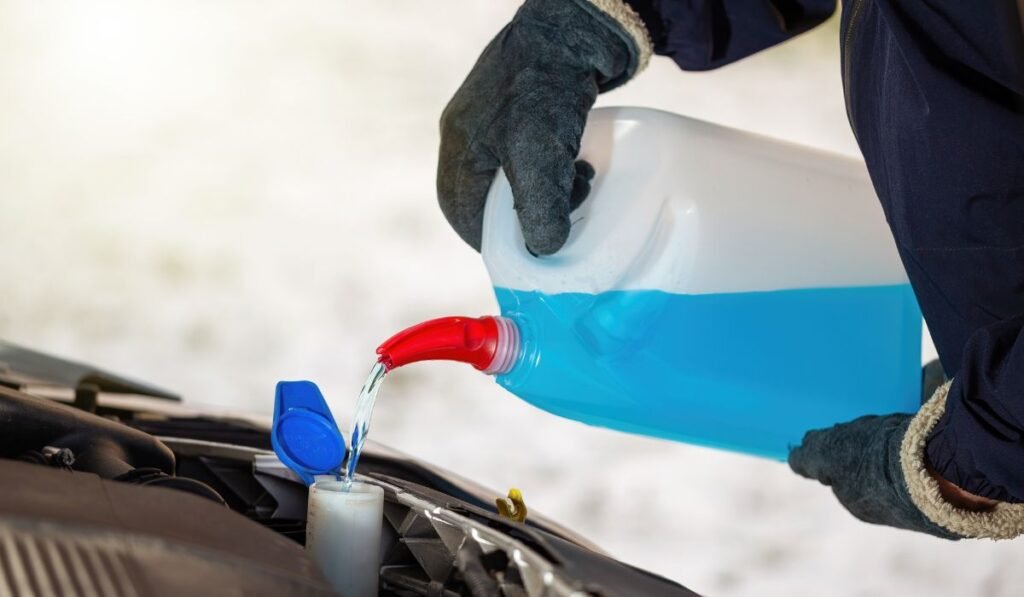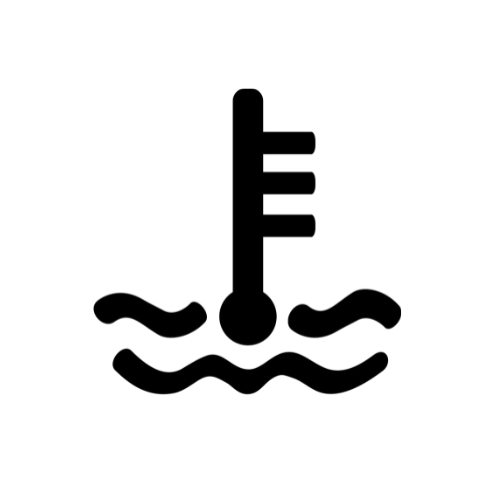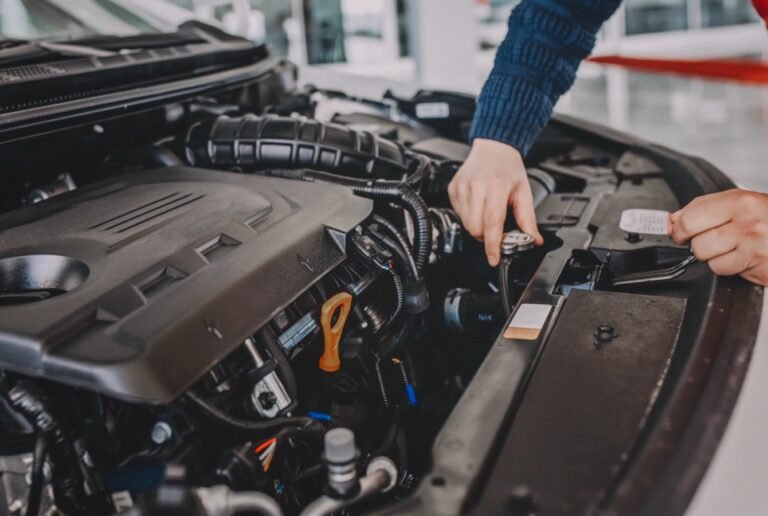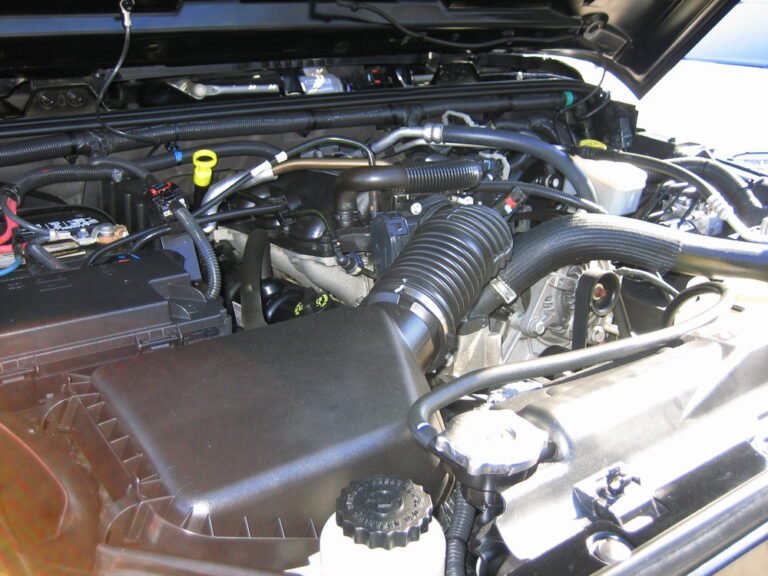Can Low Oil Cause Coolant Leak?
Low oil levels can contribute to coolant leaks in a vehicle. When oil levels are low, it puts additional stress on the engine, which can lead to overheating and a subsequent coolant leak.
Additionally, low oil levels can cause the engine to run hotter, increasing the pressure in the cooling system and potentially causing leaks. It is crucial to regularly monitor and maintain proper oil levels to prevent coolant leaks and ensure the longevity of the engine.
Taking proactive measures to address low oil levels can help avoid costly repairs and potential damage to the vehicle.

Engine Fluid Dynamics
The Introduction to Engine Fluid Dynamics is a critical aspect of understanding how your vehicle operates. Your car engine consists of several moving parts that require lubrication to work efficiently. Different fluids play a vital role in ensuring that your engine runs smoothly.
The Role Of Oil In Your Engine
Oil is the lifeblood of your car engine. It lubricates the moving parts, reduces friction, and prevents wear and tear. Additionally, oil helps to dissipate heat from the engine and prevents rust and corrosion. Your engine oil should be changed regularly, as it breaks down and becomes contaminated with debris over time, which can lead to engine damage.
How Coolant Systems Work
Coolant is another critical fluid that helps to regulate engine temperature. The coolant system in your car comprises a radiator, water pump, thermostat, and hoses. The coolant absorbs heat from the engine and transfers it to the radiator, where it is dissipated into the environment. This process helps to prevent overheating and ensures that your engine operates within its optimal temperature range.
In conclusion, the role of engine fluids cannot be overstated in maintaining your car’s performance. Regular maintenance, including oil changes and coolant flushes, can help to prevent engine damage and prolong the life of your car.

Common Causes Of Coolant Leaks
Worn Out Hoses And Clamps
Over time, worn-out hoses and clamps can develop cracks or leaks, leading to coolant seepage. These components are essential for maintaining the integrity of the cooling system, and any degradation can result in leakage.
Radiator Issues
A damaged or corroded radiator can be a significant culprit in coolant leaks. Whether it’s due to physical damage or internal corrosion, a compromised radiator can result in coolant seepage.
Head Gasket Failure
Head gasket failure can lead to the mixing of coolant and oil, causing potential leaks. This vital component seals the combustion chambers and prevents the mixing of fluids, so any failure can result in a coolant leak.
The Myth: Low Oil Leading To Coolant Leaks
Low oil can cause coolant leaks in some cases. When the oil level is low, it can lead to increased engine temperatures, which may result in coolant leaks. It’s important to regularly check and maintain both oil and coolant levels to prevent potential issues.
Origins Of The Myth
The idea that low oil levels can cause coolant leaks is a common misconception that has been circulating for years. It is unclear where this myth originated from, but it is often perpetuated by people who are not familiar with the inner workings of a vehicle’s engine. Some mechanics may also use this myth as a scare tactic to convince car owners to get their oil changed more frequently.
Why Oil Levels Don’t Directly Cause Leaks
Contrary to popular belief, low oil levels do not directly cause coolant leaks. The two systems are separate and have no direct connection with each other. Oil is responsible for lubricating the engine and helping it run smoothly, while coolant is used to regulate engine temperature.
Low oil levels can cause engine damage and lead to overheating, but they will not cause the coolant to leak. However, overheating can cause damage to the engine’s seals and gaskets, which can eventually lead to coolant leaks.
It is important to regularly check both oil and coolant levels to ensure that your vehicle is running smoothly. If you suspect a coolant leak, it is best to take your vehicle to a trusted mechanic who can properly diagnose and repair the issue.
Remember, while low oil levels can be damaging to your engine, they are not directly responsible for coolant leaks. Keeping up with regular maintenance and addressing any issues promptly can help prevent both problems.
Difference between Correlation Vs. Causation
Correlation versus causation is an essential concept to understand when it comes to diagnosing automotive issues. It’s easy to assume that low oil levels can directly cause a coolant leak in a vehicle, but the reality is more complex. Let’s delve into this topic and explore the relationship between low oil and coolant leaks.

Understanding Engine Wear And Tear
Engines are complex systems with various components working together. Low oil levels can lead to increased friction and heat, which may accelerate wear and tear on engine parts. This wear and tear can potentially contribute to the development of coolant leaks. However, it’s important to note that low oil alone may not be the sole cause of coolant leaks.
Identifying Real Culprits Behind Leaks
When diagnosing coolant leaks, it’s crucial to consider all potential factors contributing to the issue. While low oil levels can exacerbate engine wear and tear, other factors such as damaged gaskets, corrosion, or faulty components can also play a significant role in the development of coolant leaks. Therefore, a comprehensive inspection of the engine and cooling system is necessary to accurately identify the real culprits behind leaks.
Diagnosing Coolant Leaks
When it comes to the performance and longevity of your vehicle, maintaining the proper levels of both oil and coolant is crucial. While it’s easy to understand the role that low oil plays in engine health, you may be wondering if low oil can also cause a coolant leak. In this section, we will explore the different ways to diagnose coolant leaks in your vehicle.
Visual Inspection Tips
Performing a visual inspection is the first step in diagnosing coolant leaks. By visually examining the engine, hoses, radiator, and other components, you can identify any visible signs of leakage. Here are some visual inspection tips:
- Check for any puddles or stains on the ground underneath your vehicle. Coolant leaks often leave behind a distinctive green, yellow, or pinkish fluid.
- Inspect the radiator and coolant hoses for any signs of cracks, bulges, or leaks. Pay close attention to areas where the hoses connect to the engine or radiator.
- Examine the engine for any signs of coolant residue, such as white stains or crusty deposits. This could indicate a leak in the engine gasket or cylinder head.
If you notice any of these visual indicators, it’s important to address the issue promptly to prevent further damage to your vehicle’s cooling system.
Pressure Testing The Cooling System
If a visual inspection doesn’t reveal any obvious coolant leaks, the next step is to perform a pressure test on the cooling system. This test helps to identify any hidden leaks that may not be visible to the naked eye. Here’s how to conduct a pressure test:
- Start by ensuring your vehicle is cool and the engine is off.
- Attach the pressure tester to the radiator or coolant reservoir, following the manufacturer’s instructions.
- Pump the pressure tester to the recommended pressure level.
- Observe the pressure gauge and look for any significant drops in pressure. A rapid decrease in pressure indicates a coolant leak.
- Inspect the cooling system components, such as the radiator, hoses, water pump, and thermostat housing, while maintaining the pressure to pinpoint the source of the leak.
Pressure testing the cooling system can help you identify any hidden leaks and determine the extent of the problem. It is recommended to consult a professional mechanic if you are unsure about performing this test yourself.
The Impact Of Oil On Engine Temperature
When it comes to the performance and longevity of your vehicle’s engine, maintaining the proper levels of oil and coolant is crucial.
Oil’s Role In Heat Transfer
Oil plays a critical role in heat transfer within the engine. It helps to lubricate and cool various engine components, ensuring they function optimally. When the oil level is low, the engine can experience increased friction and heat buildup, leading to potential damage and overheating.
Consequences Of Running Low On Oil
Running low on oil can have severe consequences for the engine’s overall temperature regulation. Without adequate lubrication, the friction between moving parts can cause elevated temperatures, potentially leading to coolant leaks due to the increased pressure within the system.
Preventive Measures To Avoid Leaks
Regular maintenance and thorough checks can help prevent coolant leaks. By following a few simple steps, you can keep your vehicle in top condition and avoid costly repairs.
Regular Maintenance Schedule
A consistent maintenance schedule is key to avoiding leaks. Make sure to follow the manufacturer’s guidelines for oil changes and coolant flushes.
Regularly inspect hoses, gaskets, and the radiator for any signs of wear or damage. Addressing these issues early can prevent leaks from occurring.
Checking Fluid Levels
Regularly check the levels of oil and coolant in your vehicle. Low oil levels can lead to increased engine heat and potential coolant leaks.
If you notice any leaks or drops in fluid levels, address them promptly. Ignoring these signs can lead to more significant issues down the line.
Myth Busting: Expert Opinions
Low oil levels do not directly cause coolant leaks in a vehicle. While both low oil and coolant levels can indicate a problem, they are separate issues that require individual attention and diagnosis by a professional mechanic.
What Mechanics Say
Mechanics debunk the myth of low oil causing coolant leaks. They emphasize the distinct functions of oil and coolant in a vehicle.
Oil lubricates engine parts, while coolant regulates temperature. Mechanics stress the need for regular maintenance.
Advice From Car Manufacturers
Car manufacturers echo mechanics’ sentiments. They highlight the importance of proper oil and coolant levels.
Manufacturers recommend following maintenance schedules to prevent issues.
Case Studies: Coolant Leak Scenarios
Exploring real-life scenarios can help us understand the impact of low oil on coolant leaks. Let’s delve into some case studies to illustrate different coolant leak situations.
Low Oil Incidents
Case 1: Low oil levels can lead to engine overheating, causing the coolant to boil and escape through cracks.
Case 2: Neglected oil changes can result in sludge buildup, causing pressure that may lead to coolant leaks.
Unrelated Coolant Leak Examples
Case 3: Damaged hoses can cause coolant leaks, irrespective of oil levels in the engine.
Case 4: Faulty radiator caps can result in coolant leaks, unrelated to the oil condition.
Conclusion
Low oil levels can indeed lead to coolant leaks in a vehicle. It’s crucial to regularly check both oil and coolant levels to prevent potential issues. Stay proactive in maintaining your car’s fluids to avoid costly repairs down the road.
Prioritize your vehicle’s maintenance for optimal performance.

At CoolantInCar, we are dedicated to demystifying the world of engine coolant and cooling systems.



One Comment